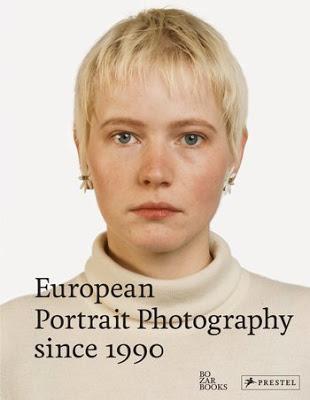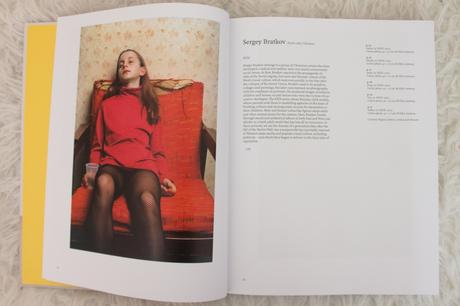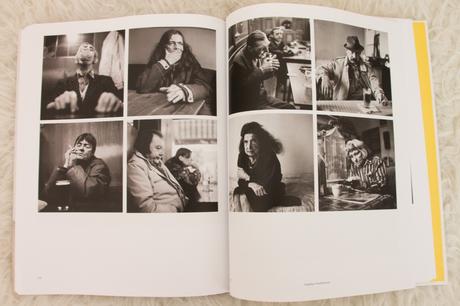 D Portrait Fotografie ist für mich eine der spannendsten Richtungen der Fotografie. Vor kurzem habe ich bei Random House das Buch "European Portrait Photography since 1990" entdeckt und mich sofort verliebt. Netterweise habe ich dann ein Rezensionsexemplar dieses Buches erhalten und möchte es euch heute vorstellen.
D Portrait Fotografie ist für mich eine der spannendsten Richtungen der Fotografie. Vor kurzem habe ich bei Random House das Buch "European Portrait Photography since 1990" entdeckt und mich sofort verliebt. Netterweise habe ich dann ein Rezensionsexemplar dieses Buches erhalten und möchte es euch heute vorstellen. E One really interesting topic for me in photography is portrait photography. Some time ago I found this really great book "European Portrait Photography since 1990" by Frits Gierstberg and really fall in love with it. Luckily I got a review copy and so I will introduce this book to you today.
D Kurzinformation
Preis: 49,95€
Seiten: 240
Sprache: EnglischVerlag: Prestel VerlagISBN-13: 978-3791349275Erscheinungsdatum: 23. Februar 2015
Klappentext"Bilder vom Menschen haben eine lange Tradition in der europäischen Kunstgeschichte. Im 19. Jahrhundert übernahm die Fotografie diese Rolle und seitdem werden immer wieder auch Porträtaufnahmen befragt, wenn es um die Bewertung historischer Epochen geht. Die Autoren des vorliegenden Bandes nahmen das Jubiläum des Falls des Eisernen Vorhangs zum Anlass, um eine Bestandsaufnahme europäischer Porträtfotografie der letzten 25 Jahre
vorzulegen. Mehr als 40 Fotografen zeigen das Gesicht des vereinten Europas und gehen der Frage nach der Identität seiner Bewohner in Zeiten von Grenzöffnungen und Wirtschaftskrisen, globaler Vernetzung und nationalistischen Konflikten nach."
D Meine MeinungAm Anfang des Buches befinden sich erstmal zwei Essays von verschiedenen Personen und dann ein einleitender Text von Frits Gierstberg selbst. Diese Texte bilden eine gute Einführung in das Buch. Danach befindet sich gleich der "Catalogue", wo sich nach Fotografen geordnet Bilder im vollen Seitenformat befinden. Dort gibt es jeweils einen kurzen Text zu den Fotografen und ansonsten befinden sich in diesem Teil hauptsächlich Bilder. Am Anfang hatte ich die Vermutung es handele sich bei den Bildern einfach nur um relativ aussagelose Portraits, wahrscheinlich ohne große Story dahinter. Aber die Bilder eines jeden einzelnen Fotografen in diesem Buch erzählen eine Geschichte. Beispielsweise Sergey Bratkov's Serie "Kids" aus dem Jahr 2000 hat mir besonders gut gefallen. Diese Reihe zeigt russische Kinder Modells, deren Eltern sie zu Modelagenturen brachten um Geld zu verdienen. Dann gibt es noch eine Reihe von einem Fotografen, der Behinderte fotografiert hat, die ich klasse finde. Es sind einfach wirklich viele tolle Reihen und teilweise könnte ich sie stundenlang anschauen und über ihre Geschichten nachdenken.
Nach dem Catalogue folgt dann noch eine Diskussion zum Thema "Photography and the Renaissance of the Portrait". Mir wurde in dieser Diskussion nicht ganz klar, wieso die Portrait Fotografie gerade mit der Renaissance verglichen wurde und ich finde diese Epoche auch nicht besonders interessant. Die Diskussion war also nicht ganz mein Fall. Danach gab es abschließend auf den letzten paar Seiten noch einen weiteren Essay "The face of Europe: regarding European identities" von Alicja Gescinska, welcher mir wiederum sehr gut gefallen hat.
E My opinionAt the beginning of the book are two essays from different people and a introducing text bei the author Frits Giestberg. Those texts are a great introduction into the book.
After that the "Catalogue" starts, where all the photos are in full page format, organized by the photographers. There is always a short text to each photographer but besides that in this part are only photos. When I first read about this book I had the assumption that there would be a lot of meaningless portraits without much story behind. But each picture in this book tells it's story. For example I really loved Sergey Barkov's series "Kids" from the year 2000. It tells the story of Russian child models, which were forced to do this job for their parents to earn some money. There is also a series of a photographer that photographed disabled people, that is really great. So there are a lot of meaningful series that I could spent hours looking at and thinking about the story they tell.
Behind the Catalogue is a discussion about the topic "Photography and the Renaissance of the Portrait". To be honest I didn't get, why they are comparing portrait photography with the Renaissance. And I'm not really interested in this era. So the discussion wasn't really my thing but after it on the last pages theirs another essay called "The face of Europe: regarding European identities" by Alicja Gescinska, that I really liked.


D Fazit
Das Buch ist für mich unerwartet kritisch, was ich wirklich toll finde. Die im Klappentext erwähnten Themen - Wirtschaftskrise, globale Vernetzung und nationale Konflikte - werden durch die Bilder gut gezeigt und kritisch betrachtet. Ich bin auf jeden Fall total begeistert. Ich habe am Anfang eine Weile gebraucht um die Jahreszahlen der Bilder zu finden, aber nachdem ich sie entdeckt habe - auf den Vorstellungsseiten des jeweiligen Fotografen - war es eigentlich ziemlich offensichtlich. Dieser einzige Kontra-Punkt, der mir aufgefallen wäre fällt also weg.
Alles in allem ist das Buch eine tolle Ansammlung aus Portrait Fotografien, wobei auch viel Ganzkörper dabei ist. Auch die Essays fand ich sehr mitreißend und gut geschrieben. Nur die Diskussion war nicht ganz mein Fall, aber das ist nicht so tragisch.
Ich fand es sehr interessant zu lesen und würde es daher auch weiterempfehlen.
E ConclusionThe book was unexpected critical what I really like. The pictures criticize topics like slump, global networking and national conflicts. First I needed some time to find the year dates but when I found them - on the introduction pages of the authors - I thought it was pretty obvious. So that's not really a negative point.
Altogether I think this book is a nice collection of portrait photos - well there are some whole-body shots, too. I really liked the essays, but the discussion wasn't really my thing. So I liked to read this book and I would recommend it.





